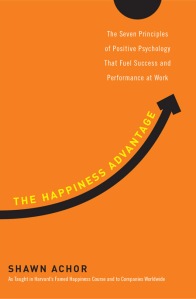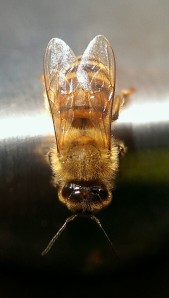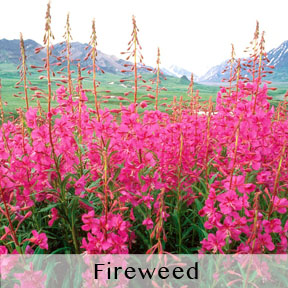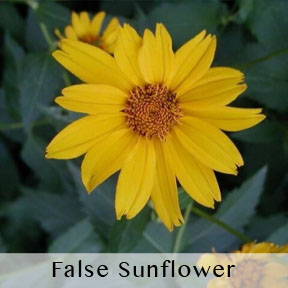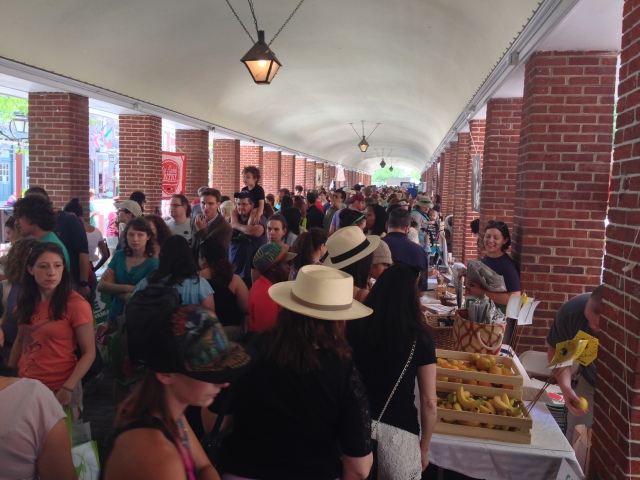Spring is here, and I suspect you’re not hearing anyone say, “I want more insects in my yard this year!” Instead, I suspect it will be “Help! I have too many aphids!” or “Japanese beetles are eating my roses!”
(Left) Yellow aphids cover our Swamp milkweed plants. (Right) An Oriental beetle snacks on a blossom of our Virginia rose bush.
All too often, out comes the bug spray, and more poison finds its way into the environment. But the spray doesn’t help for long. New pests soon move in. Fortunately, there is a better solution: get more insects!
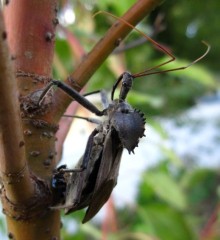


Our yard is quite popular with six-legged visitors. (Left) This Wheel bug (Arilus) was photographed busily laying eggs on our Red-osier dogwood bush. (Middle) These Milkweed bug nymphs enjoy a free meal from our Swamp milkweed seed pods. (Right) Get a room, please. Some Robber flies stealing a tender moment on our deck railing.
The problem most gardeners have isn’t insects in general. At least it shouldn’t be, as insects provide valuable benefits to the garden, from pollination to soil aeration. The problem usually is specific insect species that cause excessive damage. One way to minimize that problem is to encourage a wider variety of insects in your garden. You, in essence, create a buffet which attracts diners to keep your problem insects under control.



(Left) Hummingbirds are frequent visitors to the Trumpet honeysuckle vine we planted. (Center) Hummingbirds also eat insects, like the tiny ants attracted to our Summer Sweet bush’s blossoms. (Right) A swallowtail butterfly, having narrowly missed becoming someone’s lunch, enjoys its own from the flowers of our Bottlebrush buckeye.
No, I am not suggesting an alternative, protein-heavy diet for you and your friends. The diners you want to attract are insects, birds, and other small creatures. The trick is to keep enough of them in your yard at all times that they keep those pest populations from booming. A steady and reliable food supply is the key.


(Left) We don’t really mind this Banded tussock moth caterpillar taking a few nibbles from our tree. (Right) An Eight-spotted forester moth took a rest on our patio door one afternoon.
The never-ending buffet should start with a variety of native plants in your yard. Native plants provide food (nectar, pollen, leaves) and habitat for a greater variety of the insects native to your area than do plants from other parts of the world, country, or even state. Some of the insects they support in turn become food for others. Your buffet is now offering a vegetable and a meat course.

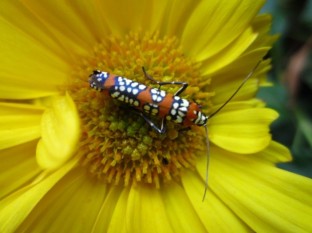
(Left) Our Boltonia flowers offered an interesting place for a Pisaurina spider to hang out and ambush a fly. (Right) This tiny piece of mosaic art is actually an Ailanthus webworm moth we spotted near our doorway.
What happens when a pest species starts to increase in number? Your garden’s variety of native plants ensure there are now predator insects already present and ready to dine. You will still see some periodic increases in certain insects, but by allowing the predatory insects to come to the rescue, you help them to create the next generation of buffet diners, and the next after that.
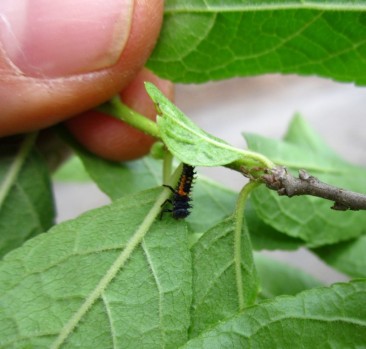

Different scales, but both are predators in the garden. (Left) Nasty-looking creatures are ladybugs, at least in their tiny larval stage. This one had great numbers of aphids to eat in our garden. (Right) Measuring about four inches long, this mantis resting on our fence will devour bees and any other insect it can catch in its grip.
You can start small by planting a few native flowers, which will add a splash of color and attract pollinators. Add more natives as time allows: flowers, shrubs, vines or trees. As your yard’s ecological web grows more complex and robust, it builds up its own natural resistance to any one insect pest. It also acts as an ecological oasis for insects and birds.
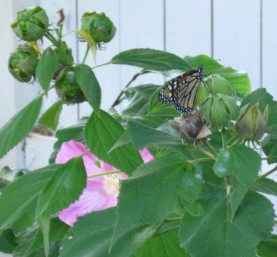

(Left) This Monarch butterfly, resting on our native Hibiscus moscheutos, may have been the momma who laid eggs on the nearby milkweeds. (Right) A few weeks later, a Monarch caterpillar was happily chewing on our Swamp milkweeds.
A wide variety of insects in your yard will keep your garden healthy, and interesting too. Those spiders on patrol offer good snacking for birds stopping by on their rounds. You may even start to appreciate and welcome some of the insects you formerly considered pests. With their numbers under control, they are just food for your (non-human) guests.
Your new motto: more insects, please!

(Above) A Clouded yellow sulpher butterfly enjoys nectar from our American wisteria. (Top of Blog) A bumblebee sticks his pudgy face into an Ohio spiderwort blossom.
Roland is a native plant enthusiast, wood carver, and occasional animator who lives and gardens with his wife and two cats in Kensington, Maryland. He works at MOM’s central office.
To look up information about plants native to your region, visit the Lady Bird Johnson Wildflower Center’s Native Plant Information Network (NPIN).




